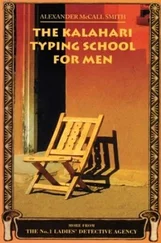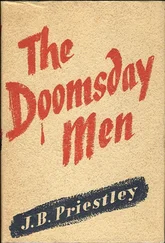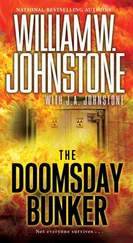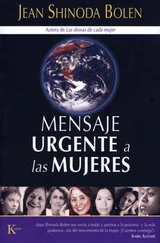A contributor to Photography magazine put the salacious possibilities of Röntgen’s discovery into verse:
The Roentgen Rays, the Roentgen Rays,
What is this craze:
The town’s ablaze
With the new phase
Of x-ray’s ways.
I’m full of daze,
Shock and amaze,
For now-a-days
I hear they’ll gaze
Thro’ cloak and gown – and even stays,
These naughty, naughty Roentgen Rays. 22
In February 1896, media mogul William Randolph Hearst telegraphed America’s most famous scientist and inventor, Thomas Edison, asking for a ‘cathodograph’ of the living human brain. 23Never one to turn down a good publicity opportunity, Edison agreed. Expectant reporters staked out Edison’s laboratory at West Orange, New Jersey, eager for news of this latest scientific marvel. Inside his ‘invention factory’, America’s own Wizard worked day and night to capture the matter of the mind on a photographic plate. 24Of course, it was impossible, and after three weeks of waiting in the cold the newshounds ran out of patience and departed.
Edison did, however, produce one of the first fluoroscopes, a device which enabled live, instantaneous X-ray images to be seen on a fluorescent screen. It must have been an extraordinary, almost revelatory experience for people at this time to see such images from within their own bodies. Ordinary moving pictures were scarcely a year old. Louis Lumière had patented his cinematograph in 1895. The technological innocence of people at this time is difficult to imagine in our own age of virtual reality. An audience at one of the first films by the Lumière brothers, L’Arrivée d’un train en gare de La Ciotat (1895), ran from their chairs at the sight of a train hurtling towards them from the screen.
Georges Méliès, the pioneer of the trick film, made one of the first movies about X-rays in 1897, although like others of its day it was just a minute long. In the film, Les Rayons Roentgen , a man steps behind a screen, where – lo and behold – the X-ray of his skeleton appears. But then, with masterly cinematic sleight of hand, the skeleton steps out from behind the screen and the man’s empty skin drops to the floor. It’s a superb visual joke, and the film ends with a slapstick explosion as the X-ray equipment blows up, killing the scientist.
When the American Wizard’s fluoroscope went on public display, hundreds waited in line to see ‘Edison’s Beneficient [ sic ] X-ray Exhibit’. 25The savvy inventor was soon marketing the ‘Thomas A. Edison X-ray Kit’ and even produced a hand-held X-ray device. As the craze gripped the nation, an Iowa farmer claimed to have transmuted a piece of metal worth 13 cents into $153 worth of gold by using X-rays. It was even suggested by a New York newspaper that the College of Physicians and Surgeons were using X-rays ‘to reflect anatomic improvement on the ordinary methods of learning’. 26Such was the public hunger for miraculous science that, within a year of their discovery, over a thousand articles and fifty books had been published on X-rays.
The medical potential of Röntgen’s new technique for seeing inside bodies was immediately realized. The veil of flesh could now be withdrawn at will, with obvious diagnostic applications. One of the first medical X-rays shows a needle in the foot of a Manchester dancing girl, taken just weeks after Röntgen’s announcement. Such was the eagerness of medics to find people to X-ray that one wit commented that ‘suitable patients are at a premium. A woman who has absorbed a needle, a man harbouring a projectile, is a persona grata at every Surgical Institute in the Old and New Worlds.’ 27
On the battlefield, bicycle-powered X-ray machines, which looked as though they had been designed by Heath Robinson, effortlessly located bullets in bodies. Surgeons no longer needed their often inadequately sterilized probe: ‘Modern science has provided the surgeons with a probe which is painless, which is exact, and, most important of all, which is aseptic’. 28
Thomas Mann’s classic novel The Magic Mountain (1924) explores the attitudes of a generation doomed to die in the trenches of World War I. This pathology of an age sleepwalking towards the abyss of war is set in a sanatorium in the Swiss mountain resort of Davos. Here the main character, Hans Castorp, has his first X-ray. The gloomy X-ray laboratory smells of ‘stale ozone’ and reminds him of a ‘technological witches’ kitchen’. The radiologist proclaims X-rays as a ‘triumph of the age’ and, like a conjuror, announces the start of the process: ‘The magicking is about to begin!’ With these words his assistant pulls a lever and releases an electrical display worthy of any mad scientist’s laboratory:
Now, for the space of two seconds, fearful powers were in play – streams of thousands, of a hundred thousand of volts, Hans Castorp seemed to recall – which were necessary to pierce through solid matter. They could hardly be confined to their office, they tried to escape through other outlets: there were explosions like pistol-shots, blue sparks on the measuring apparatus; long lightnings crackled along the walls. 29
Hans Castorp’s cousin is the first to be examined with the fluoroscope. Castorp watches, fascinated by ‘a bag, a strange, animal shape’ which ‘expanded and contracted regularly, a little after the fashion of a swimming jelly-fish’. Suddenly, he realizes what it is. Castorp is shocked: ‘Good God, it was the heart…’ This glimpse into the living body of his cousin is a profoundly moving experience for Castorp. He is overwhelmed by conflicting emotions. Although he is unable to take his eyes away from the image of ‘this lean memento mori ’, he feels that it is forbidden knowledge, something no one should see. As he looks at his own hand rendered translucent on the fluoroscope’s screen, he realizes why he feels so ambivalent:
And Hans Castorp saw, precisely what he must have expected, but what it is hardly permitted man to see: he looked into his own grave. The process of decay was forestalled by the powers of the light-ray, the flesh in which he walked disintegrated, annihilated, dissolved in vacant mist, and there within it was the finely turned skeleton of his own hand, the seal ring he had inherited from his grandfather – a hard, material object, with which man adorns the body that is fated to melt away beneath it, when it passes on to another flesh that can wear it yet a little while… He gazed at this familiar part of his own body, and for the first time in his life he understood that he would die. 30
At Davos, the X-ray machine is invaluable in diagnosing tuberculosis. Elsewhere the therapeutic uses of the rays were also rapidly exploited, often with dubious results. In December 1896, a Viennese doctor used X-rays to treat a five-year-old girl with hirsutism, a condition in which too much hair grows on the body. Her back was exposed to X-rays for two hours a day for sixteen days. The unwanted hair did indeed fall out, but at a high cost to the patient: the poor child’s back became acutely inflamed, as if she had been badly scalded. ‘This accident was full of instruction,’ observed her doctor dryly, before reducing the X-ray treatment to ten minutes a day. 31Elsewhere, doctors began prescribing what were known as ‘X-ray séances’ to cure everything from cancer to painful inflammations. 32
Scientists had little understanding of what X-rays were or what effects they had on the body. Their use posed grave risks to both patient and radiologist. Long exposures were needed for photographs: forty minutes was not uncommon. By the end of 1896, twenty-three incidents of burns had been reported. In March that year, the great Wizard himself, Edison, noted that his eyes were sore after experimenting with X-rays. His assistant, Clarence Dally, suffered rather more serious injury. He was fated to become the first of many ‘martyrs to science through the Roentgen rays’, to quote the title of a book by a radiologist who himself died of cancer. 33
Читать дальше












